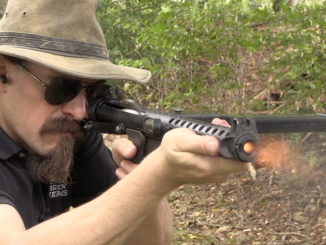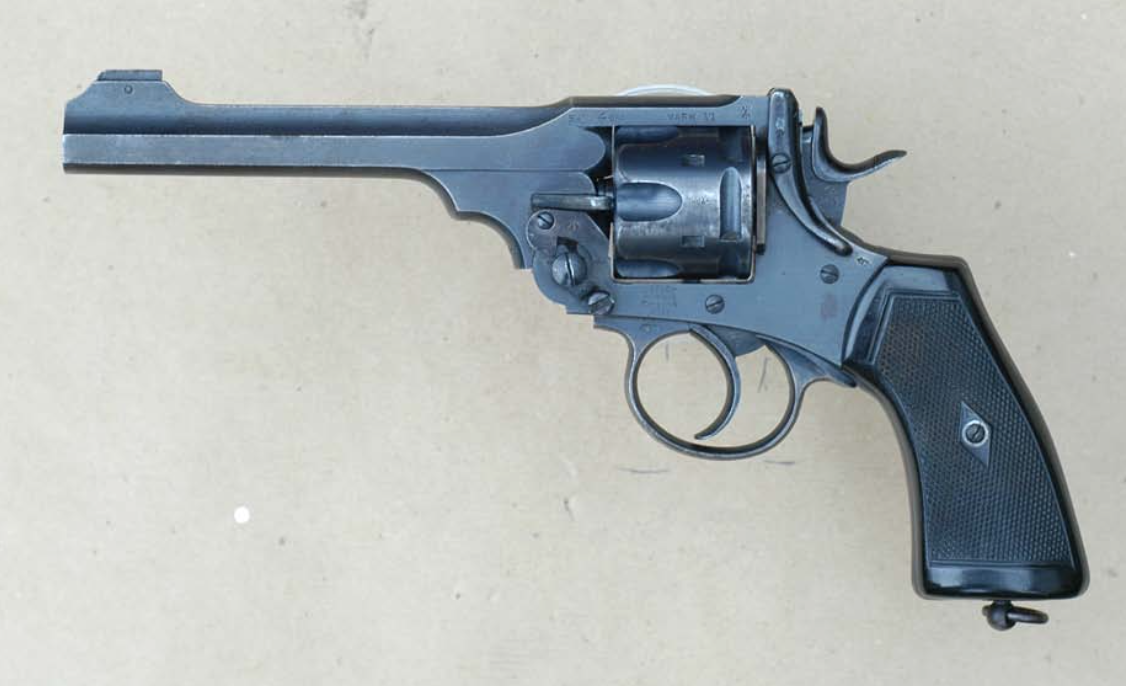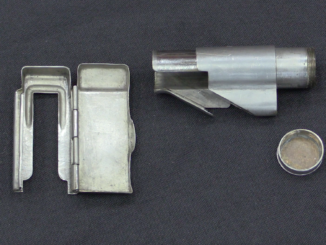The Wilson family was a gunmaking dynasty in London that began in 1730 when Richard Wilson was accepted as a Master Gunmaker by the Gunmakers’ Company. Wilson’s eldest son William Wilson would receive the same recognition in 1755, and William’s son William (junior) completed his apprenticeship in 1787 and would run the company from 1806 until 1832. The Wilsons were best know for making a large quanitity of good-quality arms for the export trade, although they did also make some much fancier weapons including Ferguson pattern breechloaders and Lorenzoni pattern repeaters, like this one.
For more information on the Wilson family I recommend this paper by DeWitt Bailey II.




In his famous Diary, Samuel Pepys made an entry on 4 March 1664, saying
The best guess is that it was either a Lorenzoni type like this, or possibly a Kalthoff.
Guesses?
cheers
eon
I don’t know, but it appears that the repeaters of the day were just toys for the privileged class. I assumed that tech development was slow because of the perceived need for social stability above everything else. Would the introduction of an inexpensive chemical primer unit have accelerated the development of breech-loading repeating arms?
I suspect the tech development was slow because the perceived cost of producing repeating service weapons was vastly more than that of producing single shooters. This gun may be able to fire 7 rounds in the time it took a normally equipped soldier to fire a couple; but if you can supply 10 muzzle loaders for the price of one repeater you get much more bang per buck by not updating.
Also keep in mind that the cost of gunpowder was also very high; there was a very limited supply of potassium nitrate in Europe and sulphur was only locally common.
“Would the introduction of an inexpensive chemical primer unit have accelerated the development of breech-loading repeating arms?”
Sine qua non for repeating weapons to become popular was technology of producing interchangeable parts. In early 19th century weapons were made and fitted by hand, so if weapon broken could be (relatively) easily repaired.
is: “(…)so if weapon broken could be”
should be: “(…)so if weapon broken could not be(…)”
Ouch. I forgot about the issues of mass production.
“repeaters of the day were just toys for the privileged class. I assumed that tech development was slow because of the perceived need for social stability above everything else”
Also notice that for military usage bigger reliability was needed – you can use guns of military provenance for entertainment: https://www.youtube.com/watch?v=S5NquqzHYig
but inverse is not guaranteed.
Shooting tuned-up gongs with high capacity rim-fire pistols? Now THAT’S creative. At least we didn’t imagine the production expenses for Tchaikovsky’s 1812 Overture (with church bells and artillery required).
The major problem wasn’t mass production, as “sheet-made” arms were fairly common at that time. (Production of similar parts by handwork.)
The real problem was that with the technology of the time, gunsmiths were doing well if they worked to tolerances of about 1/16 inch. (Remember, the metric system hadn’t been invented yet.)
That’s ‘close enough for government work” with a single shot muzzle-loader, or even a primitive breechloader. (The Sharps linen-cartridge breechloader could have been made in the 17th Century, and would have worked perfectly well with a flintlock or wheel-lock ignition system.)
With a repeater with separate reservoirs for powder and ball, it’s a different story. If grains of powder get caught in the rotating breech drum, and ignition flashes back to the powder magazine in the butt, the gun is now a fragmentation grenade right in the shooter’s face. Hence Pepys’ remark about the “safety” of the gun he mentioned; my guess is that he was being a bit optimistic, as such repeaters were known to explode at times.
True mass production needed to wait for more accurate means of measurement and more accurate ways of machining metal. So did safe, reliable repeating firearms. See Connections by James Burke, Chapter 5, “The Wheel of Fortune”, to see how this came about.
Hint; It started with clockmaking, and the time-keeping requirements of navigation at sea.
cheers
eon
I wonder if there’s a reason why something like the Sharps linen cartridge was not tried earlier, or if it was tried, it didn’t work well enough for anyone to actually make such guns. One would think that especially for rifles there would be a great incentive to invent some kind of breech loading system. The need for such was even greater prior to the invention of the Minie ball. Perhaps it was just a case of “nobody just thought to try it” like so often in history, like for example the ancient Chinese did not invent firearms despite using rockets in warfare for a long time before gunpowder arrived in Europe.
According to W.H.B. Smith in The Book of the Rifle (1948), experiments with single-shot breechloaders were quite common going back to the matchlock period. The most common form was very like the 19th Century Snider-Enfield breech system, using a “cartridge” that was basically a steel “chamber piece”, complete with its own flashpan, with a rotating cover to protect the powder and keep it in place until firing. Some such even had spring-catches to keep the breechblock shut even when the weapon was inverted or slung, a refinement only found on second model and later Sniders. (Smith, pp. 35-36.)
Smith points out that when the British government paid Jacob Snider a substantial sum for the rights to his breech system, there was a matchlock caliver with a nearly identical breech in the Tower of London’s arms collection, that dated back to the 16th Century. In fact, the Westminster Inventory of 1547 lists “380 Italian peces, guilte, without chambers, furnished with touche-boxes, etc., and 116 with chambers“.
This works out to 380 Italian-made calivers or muskets, gilded, muzzle-loading type, with all their kit, plus 116 more similar Italian-made breechloaders, complete with their metal cartridges.
Where most of them failed was in achieving a breech seal, mainly because they used steel chamber pieces. If somebody had though of using brass for one instead, the metallic cartridge single breechloader might have arrived 200 years “ahead of schedule”.
As might percussion ignition. Going back to Dr. Pepys, we find this interesting entry;
“Fulminating powders” of different heavy metals were well known to chemists even back then, as was “oxymuriate of potash”, aka potassium chlorate. So if a metallic cartridge “chamber piece” weapon had been made workable, there’s a good chance that somebody might have tried a fulminate as priming for it.
Incidentally, the reference to “Dribble the German doctor” may refer to a relation of Cornelis Drebbel (1547-1633), the Dutch inventor who actually built and tested a series of primitive submersibles for the British Royal Navy in the 1620s. By Pepys’ time Drebbel’s son-in-law, one Dr. Knuffler was apparently working on both improving the submersible, plus naval sea mines;
https://en.wikipedia.org/wiki/Cornelis_Drebbel
See also England as Seen by Foreigners in the Days of Elizabeth and James the First by William Brenchley Rye (1865);
https://books.google.com/books?id=NJBMAQAAMAAJ&pg=PA241&lpg=PA241&dq=dribble+german+doctor&source=bl&ots=E61dMJALrB&sig=sLZthaZXe-dGWT66VO7uwpea_dA&hl=en&sa=X&ved=0ahUKEwjrme_qjtfXAhWL3oMKHfulA2cQ6AEIRTAD#v=onepage&q=dribble%20german%20doctor&f=false
Our “modern world” isn’t as “new” as we generally assume it is.
cheers
eon
““Fulminating powders” of different heavy metals were well known to chemists even back then, as was “oxymuriate of potash”, aka potassium chlorate.”
Article about Hg(CNO)2 in Russian wikipedia
https://ru.wikipedia.org/wiki/Фульминат_ртути(II)
says it was discovered in 1799 by Edward Charles Howard
BTW: This substance Russian name is гремучая ртуть which mean thundering mercury
“Our “modern world” isn’t as “new” as we generally assume it is”
Breech-loading was used in some light artillery pieces yet before percussion era: https://en.wikipedia.org/wiki/Breech-loading_swivel_gun
Most common problem was gas-escape.
Um, actually, the evolution of the cannon was nearly complete in China before the idea arrived in Europe in the early 14th Century. See The Genius of China; 3,000 Years of Science, Discovery, and Invention by Robert Temple;
https://www.amazon.com/Genius-China-Science-Discovery-Invention/dp/1594772177
Early Western cast-bronze guns were essentially crude copies of Chinese or Arab models, the latter being mostly crude copies of Chinese originals. And early European recipes for black powder for propellant use included things like arsenic, because they were copied from Chinese formulas for bomb fillings, the Europeans not understanding that the arsenic was added to create a sternutating gas effect at the target, and were not needed in a propellant powder.
See Gunpowder: Alchemy, Bombards, And Pyrotechnics: The History Of The Explosive That Changed The World by Jack Kelly;
https://www.amazon.com/Gunpowder-Alchemy-Bombards-Pyrotechnics-Explosive/dp/0465037186
Even the “hand cannon” had its beginnings in China, with weapons called “fire lances”, which worked in a “Roman Candle” principle, spewing flames and launching iron or lead pellets; the ancestor of the shotgun. They were, however, considered inferior in both range and rate of fire to the crossbow, which Chinese armies as far back as the 5th Century AD used much as European armies would use the smoothbore musket in Wellington’s time.
NB; If the French-employed mercenary crossbowmen at Crecy’ and Agincourt had been trained in Chinese army-style volley-fire tactics, those battles might have ended very differently.
Interestingly, the Chinese, who evolved black powder and a variety of nasty chemical warfare concoctions by the 11th Century AD, and even had flamethrowers using kerosene as fuel by that time, never discovered the 5th Century AD Byzantine incendiary known as “Greek Fire” until they learned of it from European and Arab traders coming east over the Silk Route in the mid-12th Century. By which time black powder had made it mostly obsolete in China, and was soon to supersede it in Europe.
Going back to artillery, the smoothbore, muzzle-loading cannon of the 19th Century wasn’t significantly advanced over something like the Chinese “Great General Gun” of the 13th century, a 12-pounder with a bore of about 3.5 inches and a bronze tube about five feet long weighing about 1,200 pounds.
The major European contribution was the development of the two-wheel carriage with limber; Chinese artillery carriages were usually four-wheeled carts or wagons, which limited their elevation and thus restricted their effective range.
Other than that, there was little about the artillery used at Antietam or Gettysburg that would have been a puzzle for a Chinese artillerist of the Middle Kingdom period. Once he got over the language hurdle, he’d have been quite at home with the ordnance in use.
Not to mention being entirely familiar with the concept of a civil war, as most Chinese conflicts were exactly that- see “Warring States Period, China”.
NB; Specify that it’s the “China” version- Japan had a “Warring States Period”, too.
cheers
eon
How were the ball and main powder magazines loaded?
On a Lorenzoni, the rifle’s buttplate is hinged, and the separate magazines are in the hollowed-out stock. That’s why the muzzle has to be pointed downward as the lever is rotated through a vertical circle to load, it’s a gravity feed.
The Kalthoff had a horizontally-rotating lever trigger guard again with the separate magazines in the butt. Other than the plane of lever rotation, it worked pretty much like the Lorenzoni.
Some people claim Spencer metallic cartridge carbines and rifles are “gravity feed”, because they have to point the muzzle down to help feed the next round into the breech. This is due to a weak spring in the tubular magazine. The cure is to replace the magazine spring.
cheers
eon
Hi Ian… I’ve been having problems recently with the links you’ve included in the videos to the RIA catalogue pages. When I click on the link, I get some kind of RIA holding page with no pictures or description. It doesn’t seem to matter if I go from the blog or from a youtube link.
Anyone else having this problem?
Thanks
Jan